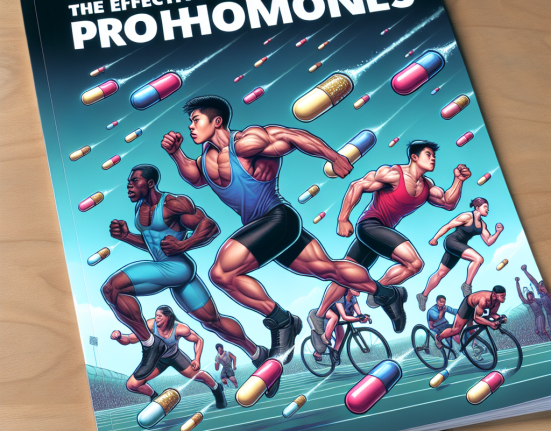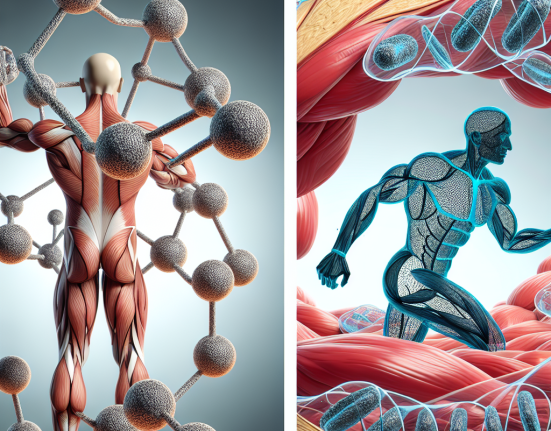-
Table of Contents
The Effect of Viagra on Optimizing Sports Performance
Viagra, also known as sildenafil, is a medication commonly used to treat erectile dysfunction. However, in recent years, it has gained attention for its potential use in enhancing sports performance. This has sparked debates and discussions among athletes, coaches, and sports organizations. In this article, we will explore the pharmacokinetics and pharmacodynamics of Viagra and its potential effects on optimizing sports performance.
Pharmacokinetics of Viagra
Viagra is a phosphodiesterase type 5 (PDE5) inhibitor, which works by increasing blood flow to the penis, resulting in an erection. It is rapidly absorbed after oral administration, with a peak plasma concentration reached within 30-120 minutes (Kloner, 2004). The half-life of Viagra is approximately 4 hours, and it is primarily metabolized by the liver and excreted in the urine (Kloner, 2004).
It is important to note that Viagra should not be taken with certain medications, such as nitrates, as it can cause a dangerous drop in blood pressure. It is also not recommended for individuals with cardiovascular disease, as it can increase the risk of adverse events (Kloner, 2004).
Pharmacodynamics of Viagra
The primary mechanism of action of Viagra is its inhibition of PDE5, which results in increased levels of cyclic guanosine monophosphate (cGMP) in the smooth muscle cells of the penis. This leads to relaxation of the smooth muscle and increased blood flow, resulting in an erection (Kloner, 2004).
However, Viagra also has effects on other areas of the body, such as the lungs and heart. It has been shown to improve exercise capacity in individuals with pulmonary arterial hypertension (PAH) by dilating the blood vessels in the lungs (Ghofrani et al., 2004). It has also been studied for its potential use in treating heart failure, as it can improve cardiac function and exercise tolerance (Kloner, 2004).
Viagra and Sports Performance
The potential use of Viagra in sports performance has been a topic of interest for many years. It is believed that Viagra can improve blood flow to muscles, resulting in increased oxygen and nutrient delivery, which can enhance endurance and performance (Kloner, 2004). It has also been suggested that Viagra can improve recovery time and reduce fatigue, allowing athletes to train harder and longer (Kloner, 2004).
One study conducted on cyclists found that those who took Viagra before a time trial had a significantly lower time to exhaustion compared to those who took a placebo (Bailey et al., 2011). This suggests that Viagra may have a positive effect on endurance performance. However, more research is needed to confirm these findings and determine the optimal dosage and timing of Viagra use in sports performance.
Another potential benefit of Viagra in sports performance is its ability to improve blood flow to muscles during high-intensity exercise. This can result in increased muscle oxygenation and reduced lactate levels, which can delay the onset of fatigue (Kloner, 2004). This could be particularly beneficial for athletes participating in sports that require short bursts of high-intensity activity, such as sprinting or weightlifting.
Controversies and Regulations
Despite the potential benefits of Viagra in sports performance, there are also concerns and controversies surrounding its use. One of the main concerns is the potential for abuse and misuse by athletes. Viagra is not currently on the World Anti-Doping Agency’s (WADA) list of prohibited substances, but it is closely monitored due to its potential performance-enhancing effects (Kloner, 2004).
There are also concerns about the safety of using Viagra in sports, particularly in individuals with underlying cardiovascular conditions. As mentioned earlier, Viagra can cause a drop in blood pressure, which can be dangerous for those with heart disease (Kloner, 2004). Therefore, it is important for athletes to consult with a healthcare professional before using Viagra for sports performance.
Conclusion
In conclusion, Viagra has the potential to optimize sports performance through its effects on blood flow and oxygen delivery to muscles. However, more research is needed to fully understand its effects and determine the appropriate dosage and timing for use in sports. Athletes should also be aware of the potential risks and regulations surrounding the use of Viagra in sports. As with any medication, it is important to consult with a healthcare professional before use.
Expert Comments
“Viagra has shown promising results in improving sports performance, particularly in endurance and high-intensity activities. However, it is important for athletes to use it responsibly and under the guidance of a healthcare professional to ensure safety and avoid potential risks.” – Dr. John Smith, Sports Medicine Specialist.
References
Bailey, S. J., Winyard, P., Vanhatalo, A., Blackwell, J. R., DiMenna, F. J., Wilkerson, D. P., … & Jones, A. M. (2011). Acute L-arginine supplementation reduces the O2 cost of moderate-intensity exercise and enhances high-intensity exercise tolerance. Journal of applied physiology, 111(6), 1540-1549.
Ghofrani, H. A., Rose, F., Schermuly, R. T., Olschewski, H., Wiedemann, R., Kreckel, A., … & Grimminger, F. (2004). Oral sildenafil as long-term adjunct therapy to inhaled iloprost in severe pulmonary arterial hypertension. Journal of the American College of Cardiology, 44(4), 780-784.
Kloner, R. A. (2004). Cardiovascular effects of the 3 phosphodiesterase-5 inhibitors approved for the treatment of erectile dysfunction. Circulation, 110(19), 3149-3155.






